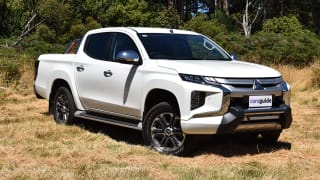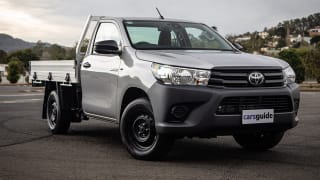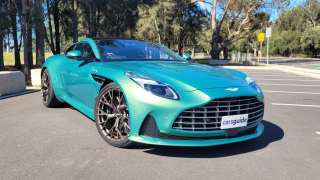Kicking off from $35,930 before on-road costs, the base Ranger XL is nearly $7000 more expensive than the previous PX III equivalent, partly because Ford has dropped the manual gearbox for Australia. It’s auto or it’s nothing.
But if you compare old versus new, prices are – on average – only around $1100 more expensive like-for-like (not including the Raptor), and that’s acceptable, given how much more kit you now get, in a palpably improved vehicle.
A fleet-focused proposition, the Ranger XL is the cheapest, and, so, as a workhorse, is all about minimum frills: hard-wearing cloth, vinyl floor, a manual handbrake, easy-access dash storage – that sort of thing.
Explore the 2023 Ford Ranger range
However, it does include features like the surprisingly old-fashioned halogen headlights, a front tow hook, a 10.1-inch touchscreen with Ford’s Sync4 multimedia system, a digital instrument cluster, manual air-conditioning, USB-A and -C ports, cloth seats, power windows and 16-inch steel wheels
Note, too, that all Rangers score nine airbags, AEB autonomous emergency braking, adaptive cruise control, lane departure alert and lane keep assist and rear parking sensors, while all pick-ups have blind spot warning and cross-traffic alert tech.
The XL is available in all body styles, as well as 4x2 and 4x4 grades. Those body styles are: two-seater Cab chassis, four-seater Super Cab chassis or pick-up, and five-seater Double Cab chassis or pick-up.
Compared to the previous Ranger, the T6.2 pick-up models introduce additional securing points at the front of the load box, box capping with integrated fixing points for added bodywork protection, an integrated load box step near the bumper for easier side access, and a lighter tailgate thanks to Ford's 'easy lift assist' system.
A built-in trailer wiring set-up is also included, though please keep in mind that the tow bar is optional for XL and XLS.
Under that bluff bonnet is a 2.0-litre four-cylinder single turbo-diesel, replacing the old 2.2-litre as the base engine. Despite being smaller, it pumps out more power and torque at 125kW at 3500rpm and 405Nm between 1750-2500rpm respectively, and is only offered with a six-speed automatic.
Meanwhile, the old 3.2-litre five-cylinder turbo-diesel has been binned, for a revised version of the 2.0-litre twin-turbo diesel (dubbed BiTurbo in Ford-speak). Mated to a completely overhauled 10-speed auto, it delivers 3kW less power at 154kW at 3750rpm, but the 500Nm torque maximum (between just 1750-2000rpm) remains, while shift quality is smoother and calmer.
Ranger 4x4s with either 2.0-litre engine stick with the standard part-time 4x4 set-up that offers 4x2 (rear-drive), 4x4 Low range and 4x4 High range.












